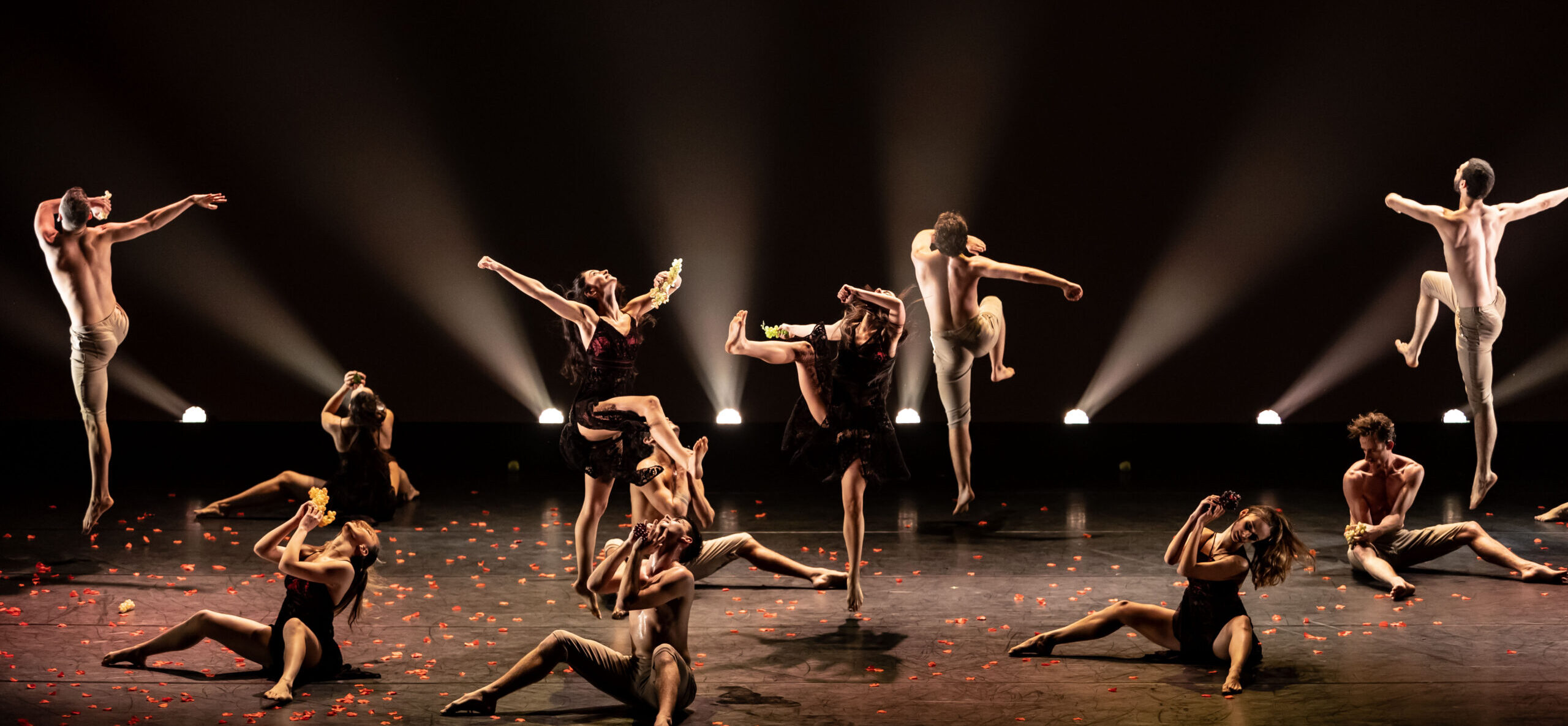Carmina Burana – Kamea Shakes the Opera
The body speaks, the spirit trembles – Kamea Dance Company’s performance breathes dramatic, passionate, colorful life into Carl Orff’s Carmina Burana, raising timeless questions about humanity.
Almost three months have passed since I first experienced a performance by Kamea Dance Company. Last night (Sunday), I met these dancers again – this time at the Tel Aviv Opera House, in front of a packed hall. Tamir Ginz’s choreography to Orff’s monumental cantata Carmina Burana was performed on stage. It’s been no less than 18 years since Ginz first created this piece, and nearly 90 since Orff composed the iconic score. The result? A performance that punches straight to the gut, echoes in the mind, and leaves you mesmerized by movement.
Between Fate and Love – A Musical Poem with Flesh
Orff’s work, based on texts from the 11th–13th centuries, deals with fate, desire, greed, and renewal. The melodies, powerful and lyrical, stay with you long after the curtain falls. Its powerful, lyrical melodies linger long after the curtain falls. Ginz translates this poetic world into physical language: movement that seeks out the divine, defies morality, dissolves in love, and wrestles with passion.
On Stage: The Body as a Full Orchestra
Twenty dancers from Kamea Dance Company push the limits of the human body in tightly orchestrated, nearly nonstop motion. Ginz has crafted a visual composition that weaves inner rhythm with Orff’s aggressive, magnificent music. It’s not just dance – it’s a ritual. An emotional carnival. A silent scream exploding in light.
The highlights were the ensemble scenes – bodies in symmetrical motion, melting and colliding like waves. Lighting, designed by Shay Yehudai, played a crucial role – on an almost bare stage, the light became the set, a visual soundtrack in its own right.
And What About Live Music?
The performance was accompanied by a recorded soundtrack – the London Symphony Orchestra conducted by Richard Hickox (2005). It sounded great, but one cannot help but imagine the power of a live orchestra. The opera house could certainly accommodate such a production – with orchestra, choir, and soloists. Granted, it’s a significant budgetary challenge – but the potential is tremendous.
Pop at the Opera
Yes, there is also “pop” in the literal sense – a popular piece. I’m referring, of course, to the musical segment O Fortuna – one of the most dramatic and recognizable passages in all of Western classical music. It opens and closes Orff’s work in a kind of fateful circle, beginning and ending with the same dramatic cry to Fortuna, the goddess of fortune. An ancient, desperate plea from the depths of the human gut – against the helplessness of life.
Bottom Line:
Tamir Ginz’s Carmina Burana is not just another dance performance. It is an encounter of body and soul with a work that refuses to age. This is art that moves, breathes, screams, kisses, and strikes all at once. A display of creative audacity – dance that restores faith in the power of the stage to move, to shake, and to challenge.

